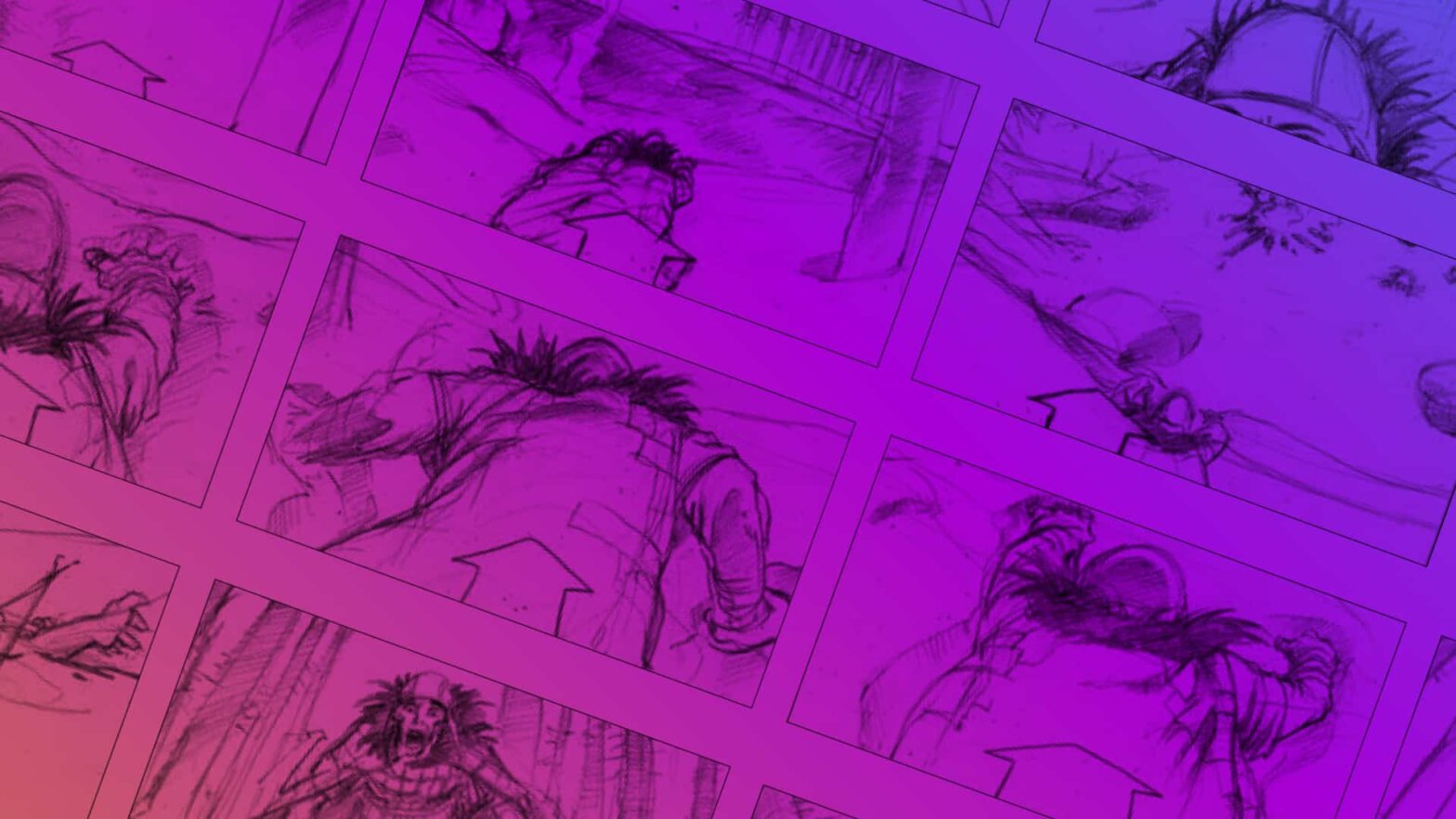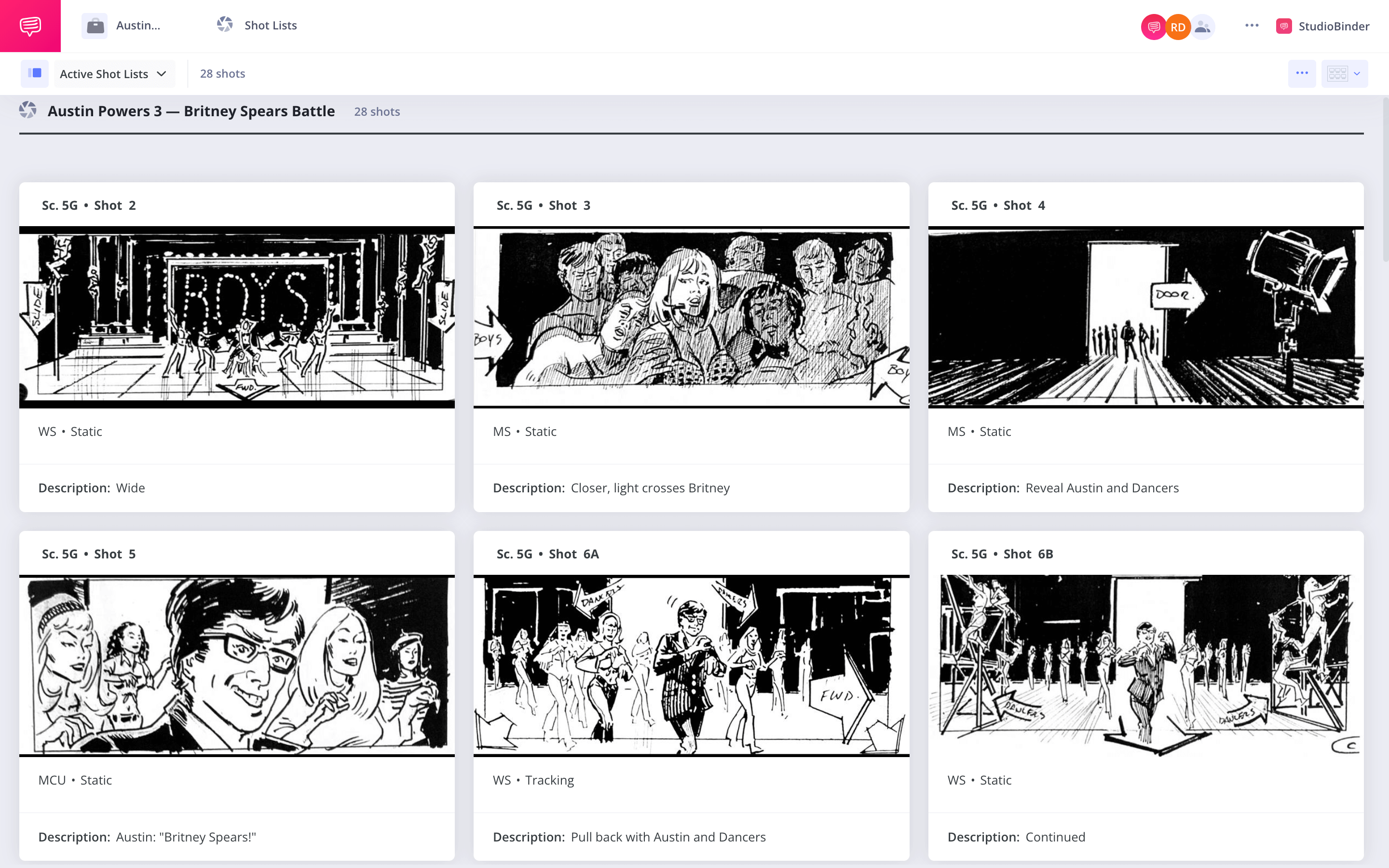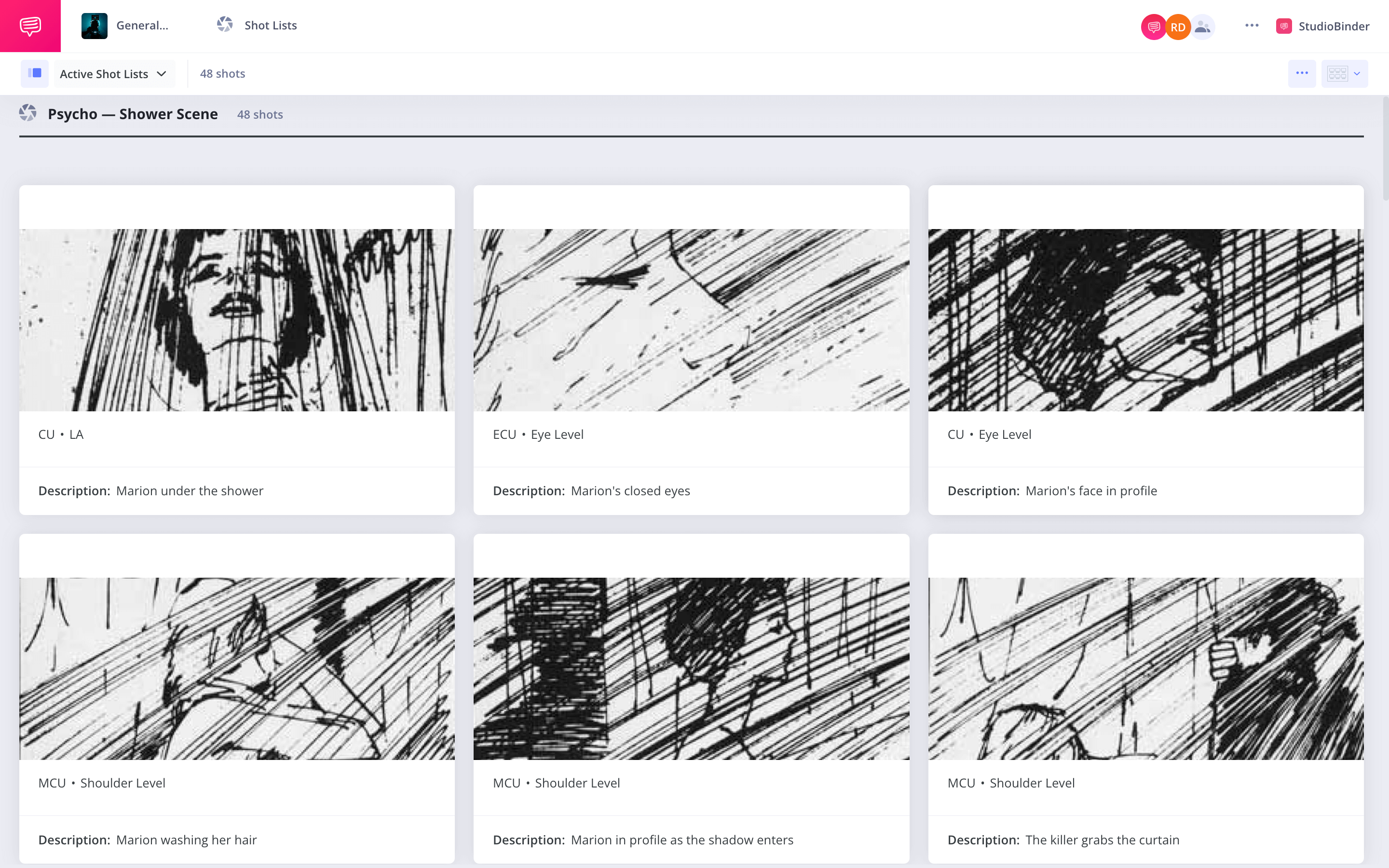Planning a video or sequence in a film doesn’t come second nature to most filmmakers. Serious prep is required. Lucky for you, there are tools to make this easier. Laying out your vision in a storyboard is one way to do it. What is a storyboard you may ask? It is a roadmap that will guide your journey from script to screen.
To really grasp the benefits of storyboarding, we’ll go beyond a simple storyboard definition to explore how filmmakers like Ridley Scott and the Coen Bros. rely on this fundamental process and how easy it will be for you to do the same on your next project.
Storyboard Definition
First let's define storyboard
Alfred Hitchcock was notorious for his 'boards' — precisely crafting the movie in his head and on the page. He was so detailed, in fact, that actually shooting the film was boring.
All the interesting work had already been done.
Does this mean that you have to be as precise as Hitchcock? Absolutely not. Storyboarding is a tool that filmmakers bring into their process but everyone is different. In reality, defining "what is a storyboard" is actually up to the individual and what they make of it.
We'll begin with a quick storyboard definition before jumping into some storyboard examples and video interviews with filmmakers on their individual approaches for how to make a storyboard.
STORYBOARD DEFINITION
What is a storyboard?
A storyboard is a visual representation of a film sequence and breaks down the action into individual panels. It is a series of ordered drawings, with camera direction, dialogue, or other pertinent details. It sketches out how a video will unfold, shot by shot.
It's is similar to a trial-run for your finished film, video, or commercial, laid out in a comic book-like form.
What's a Storyboard?
- Drawings, sketches, reference images or photographs to represent each frame.
- A description of the shot — any relevant information on the action, dialogue, or composition.
- Shot specs — shot size, lens length, two-shot, etc.
- Arrows to indicate camera and/or character movement or how each shot connects to the next.
It's one thing to define storyboards — but what does a storyboard look like? From simple stick figures to detailed sketches, the quality or content of each panel is really a secondary concern as long as the board serves its purpose for the filmmakers.
We've imported selected boards from Austin Powers in Goldmember
into StudioBinder's storyboard software to give you a better idea of the common elements found in a board.
Example of storyboard software
Storyboard Format and Layout
Traditional vs. thumbnail
Storyboards can contain as much information as you want. Again, this is a tool to help you with the pre-production process so don't feel completely tied to one storyboard format over another.
There are two basic versions of storyboard format: traditional and thumbnail. In short, the difference between these two layouts comes down to how much detail you include.
Traditional storyboards are what we see above — basic pencil sketches that include detailed information like arrows for camera movement, characters, props, etc.
There are also thumbnail style storyboards that don’t have any writing. Keep in mind I use the term thumbnail in this article and was referring to the image, not this style board. Again, the more detail you put into it, the easier it will be to execute later.
They’re not used as often as detailed ones. But then again, if it’s just you, or a small team, writing might not be necessary.
Here’s an example of a thumbnail board from a scene that needs no introduction — the shower scene from Hitchcock’s Psycho.Psycho shower scene storyboard
RELATED POSTS
Storyboard Examples
How directors approach boards
It's easy to define "what is a storyboard" but to fully understand what they are how they work, let's look at some storyboard examples.
Hitchcock wasn't the only director to make storyboards part of his process. Many directors make a storyboard for every single scene while others only use them for more complicated sequences. There are some directors that forego the process entirely.
Here's a storyboard example from the Coen Bros. first feature film, Blood Simple. Their approach to storyboarding, like everything else they do, is completely unique to them.
In this video, we get to see their original storyboards overlaid with the finished frames as they discuss their thought process.
Initial boards and final images from Blood Simple
If you're familiar with Ridley Scott's career, you'll remember that he began as an artist working on commercials. Once he became a director, he was able to bring that artistic talent into making his own boards.
With films like Blade Runner and Alien, it should be clear that storyboarding helps him craft intricate and layered imagery.
In this video, Scott discusses his personal relationship with storyboards at length as we watch a side-by-side comparison for his film Hannibal.
Ridley Scott takes storyboarding very seriously
Most of the time, a storyboard is constructed to match what's already been written in the script but they can also become deeply tied to the actual storytelling process. The importance of a storyboard in animation cannot be overstated.
An animation storyboard and animatics are fundamental steps, not just to refine the specific animation and movements but to craft story beats and character behavior at the same time.
Here's Josie Trinidad, the head of the story team for Ralph Breaks the Internet, on how she brings story and character considerations into an animation storyboard.
How to refine character and story with a storyboard
Our last storyboard example takes this idea of storyboard/script hybrid to the extreme. For his return to the Mad Max universe, director George Miller was aiming for a near-silent action film.
This "graphic novel" approach was his initial guide to crafting the action, story and characters. Only then was an actual script crafted. This is obviously the reverse of how storyboards are made but based on how successfully the film captures intense and elaborate action, maybe he's on to something.
Mad Max: Fury Road, when a storyboard comes before the script
Now that we have fully answered the question of "what is a storyboard," you should be fully prepared to start making your own. Your next step is learning how to make a storyboard, where you can also download a free storyboard template.
RELATED POSTS
Up Next
Official DGA Storyboard Examples
As we discussed above, every filmmaker approaches storyboarding differently. Some prefer black and white over color; some are satisfied with stick figures, while others turn each panel into a legitimate work of art. Let's continue our exploration of storyboards with dozens of more examples from some of Hollywood's biggest films like Jurassic Park, Alien, and Inception.
Up Next: A-list storyboard examples →
Showcase your vision with elegant shot lists and storyboards.
Create robust and customizable shot lists. Upload images to make storyboards and slideshows.


